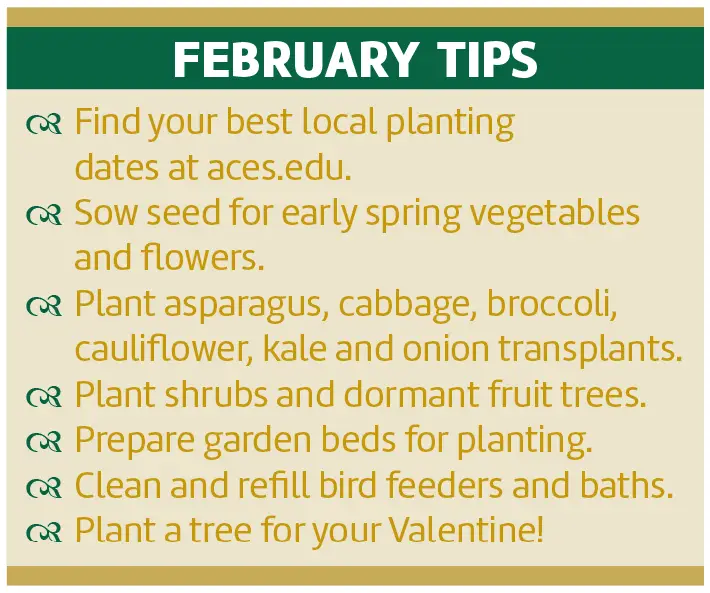
The U.S. Department of Agriculture has released a new Plant Hardiness Zone Map, an updated version of a tool that’s been helping gardeners find the right plants for their local climate conditions for more than 60 years. This latest version, the first update since 2012, offers new information about planting zones, including those in Alabama, and new insights into our changing climate conditions.
The PHZM is a system of hardiness zones based on cold hardiness — a plant’s ability to withstand average minimum (low) winter temperatures. It uses years of climate data to designate 13 color-coded geographical areas (zones) across the U.S. and its territories.
Each zone, which represents a 10-degree Fahrenheit temperature difference, is subdivided into two 5-degree Fahrenheit segments labeled “a” and “b.” So, there are 26 separate zones that range from coldest (1a) to warmest (13b).
Gardeners, landscapers, nursery operators, farmers, researchers and many others whose livelihoods depend on the plant world can use these zones to match plants to their local winter climate conditions. While it’s no guarantee of survival — other factors such as heat, drought, flood and wind tolerance also affect survivability — the PHZM map is still one of the best tools available for picking plants that are most likely to survive, even thrive, in each locale.
Since the PHZM was first released in 1960 it has undergone several updates based on available weather data. The 2023 map, which uses 30 years of weather data collected from more than 13,400 weather stations (the 2012 map was based on some 7,900 weather stations), provides a new level of accuracy and detail.
That data also led to shifts in the zones. In fact, about half of the country shifted up to the next warmer half zone from the 2012 to the 2023 map. This change affected Alabama’s zone range, too, which went from 7a to 8b in 2012 to 7b through 9b in 2023.
These shifts, while not huge, can impact our gardens in both positive and negative ways. On the plus side, it means we can be more daring in our plant selection by trying out some of those plants we once thought were too tender to survive our winters. Experts also expect plant nurseries and retailers to add some of these new options to their inventory so they will be easier to try.

On the minus side, warmer winter weather can negatively impact plants we’ve previously grown quite successfully, such as peach and apple trees that require a specific number of chill hours to set fruit. And these new zones suggest we might need to rethink our planting calendar dates.
Of course, the zones are not the only factor in plant survival. Plant selection should also be based on such factors as amount of sunlight, water and the proper soil type for plants to live. Especially with plants that may be pushing the edge of the zone, it’s best to experiment with a few before redoing the landscape.
There’s so much consider when it comes to finding the right plants, including how changes in our climate can affect the ones we have and new ones we hope to add. While the PHZM is not a direct measure of climate change or global warming, it can help us identify climate trends and prepare for future changes in our climate.
And now, before planting season arrives, is a great time to delve into the map and its new and improved website at planthardiness.ars.usda.gov. It’s also the perfect time to explore the diversity of plants that we can use in our gardens, including native species, and to consider adopting “climate-resilient” or “climate-smart” gardening practices.
A wide array of climate-friendly gardening advice is available online and great information tailored to our region can be found in the book Climate Change Gardening for the South by Barbara Sullivan. In addition, local help is always available through local Alabama Cooperative Extension system experts and Master Gardeners.
Katie Jackson is a freelance writer and editor based in Opelika, Alabama. Contact her at [email protected].




